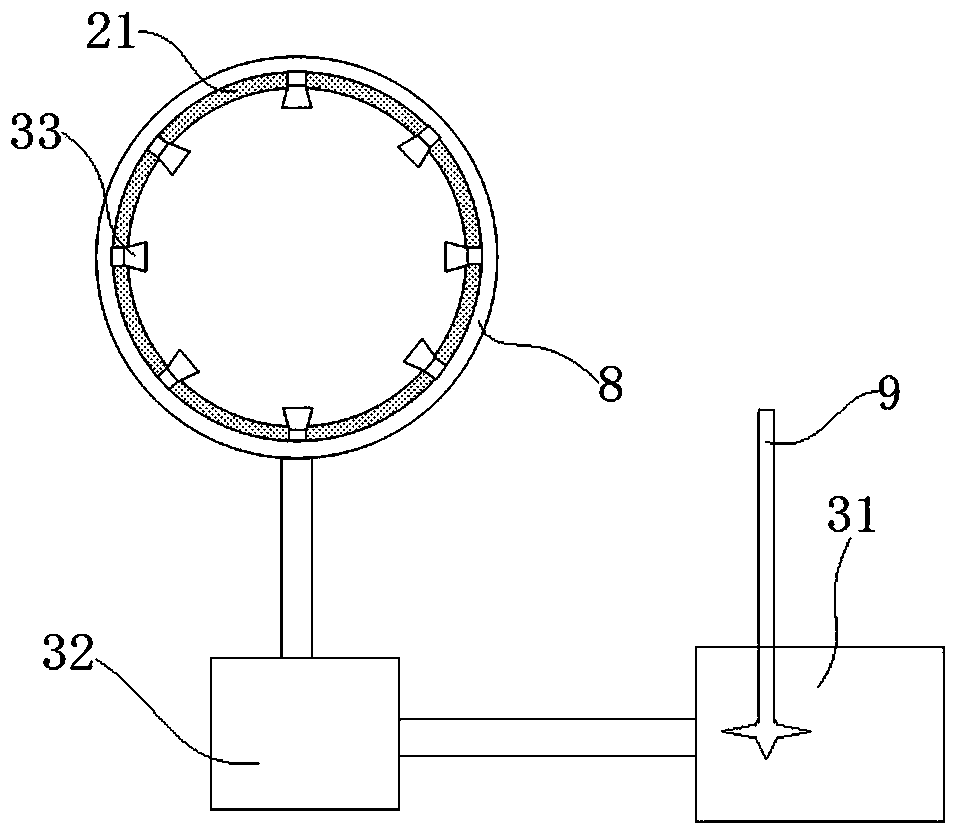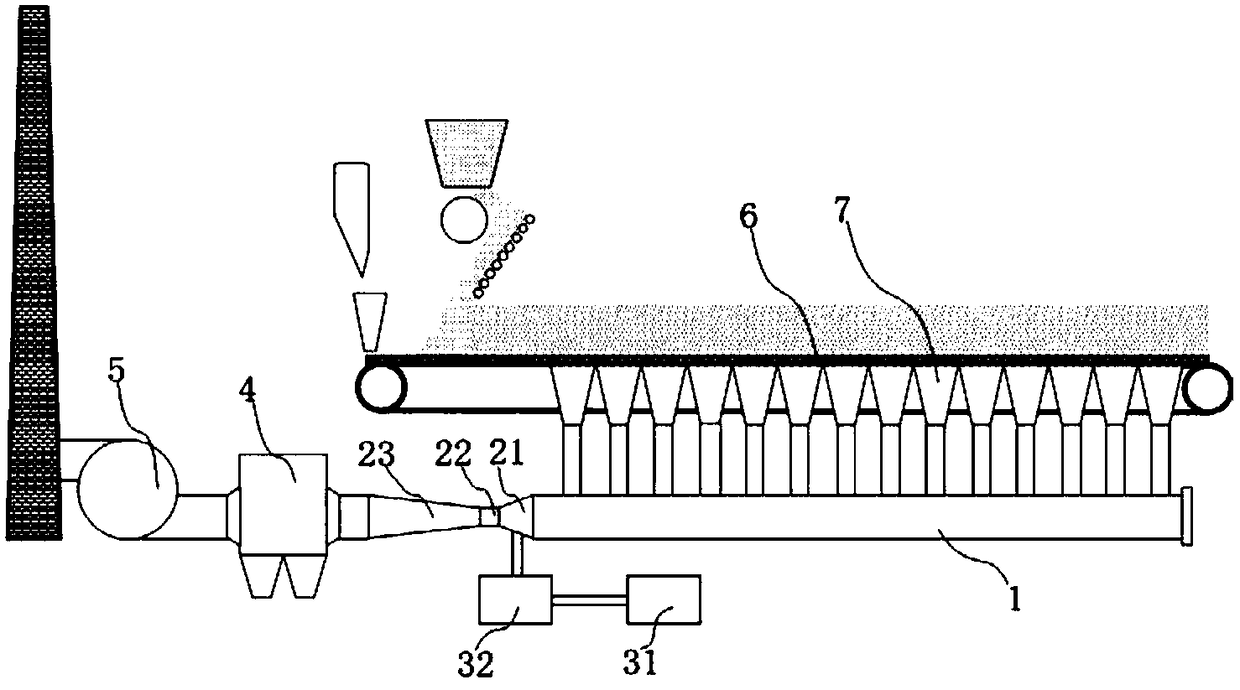A composite agglomerating agent for emission reduction of fine particulate matter in flue gas from iron ore sintering agglomeration
A fine particle and agglomerating agent technology, which is applied in the field of pollutant emission reduction in the iron ore sintering process, can solve the problems of limited emission reduction effect, complex composition, and limited emission reduction effect of fine particles
- Summary
- Abstract
- Description
- Claims
- Application Information
AI Technical Summary
Problems solved by technology
Method used
Image
Examples
Embodiment 1
[0052] combine Figure 4 with Figure 5 As shown, a composite agglomerating agent for emission reduction of fine particles of flue gas from iron ore sintering agglomeration in this embodiment: a composite agglomerating agent for emission reduction of fine particles of flue gas, each component is composed according to the following mass: polyaluminum chloride 10g, carboxymethyl Sodium cellulose 30g, polyacrylamide 30g, additive 2g. The additive is a solid additive, and the additive is composed of activated carbon and coke powder. The additive is composed of the following mass percentages: 90% activated carbon and 10% coke powder. 100μm, coke powder particle size requirement: 74μm≤coke powder particle size≤100μm.
[0053] The preparation method of the present embodiment reunion liquid is:
[0054] (A) Weigh 10 g of polyaluminum chloride, 30 g of sodium carboxymethyl cellulose, and 30 g of polyacrylamide in parts by mass, and mix 10 g of solid particle polyaluminum chloride, 3...
Embodiment 2
[0101] The basic content of this embodiment is the same as that of Example 1, except that the additive is composed of activated carbon and zeolite, and the additive is composed of the following mass percentages: 85% of activated carbon and 15% of zeolite, and the particle size of the activated carbon requires: 74μm≤activated carbon particle size≤100μm, zeolite particle size requirement: 74μm≤zeolite particle size≤100μm.
[0102] Detect the emission concentration of PM2.5 and PM10 in the sintering flue gas after the dust removal device 4, and calculate the emission reduction efficiency of PM2.5 and PM10. The emission reduction efficiency of PM2.5 is 56.4%, and the emission reduction efficiency of PM10 is 49.0%.
Embodiment 3
[0104] The basic content of this embodiment is the same as that of Example 1, except that the additive is composed of activated carbon and zeolite, and the additive is composed of the following mass percentages: 95% of activated carbon and 5% of zeolite.
[0105] Detect the emission concentration of PM2.5 and PM10 in the sintering flue gas after the dust removal device 4, and calculate the emission reduction efficiency of PM2.5 and PM10. The emission reduction efficiency of PM2.5 is 60.2%, and the emission reduction efficiency of PM10 is 48.8%.
PUM
| Property | Measurement | Unit |
|---|---|---|
| particle diameter | aaaaa | aaaaa |
| particle diameter | aaaaa | aaaaa |
| particle diameter | aaaaa | aaaaa |
Abstract
Description
Claims
Application Information
 Login to View More
Login to View More - R&D
- Intellectual Property
- Life Sciences
- Materials
- Tech Scout
- Unparalleled Data Quality
- Higher Quality Content
- 60% Fewer Hallucinations
Browse by: Latest US Patents, China's latest patents, Technical Efficacy Thesaurus, Application Domain, Technology Topic, Popular Technical Reports.
© 2025 PatSnap. All rights reserved.Legal|Privacy policy|Modern Slavery Act Transparency Statement|Sitemap|About US| Contact US: help@patsnap.com



